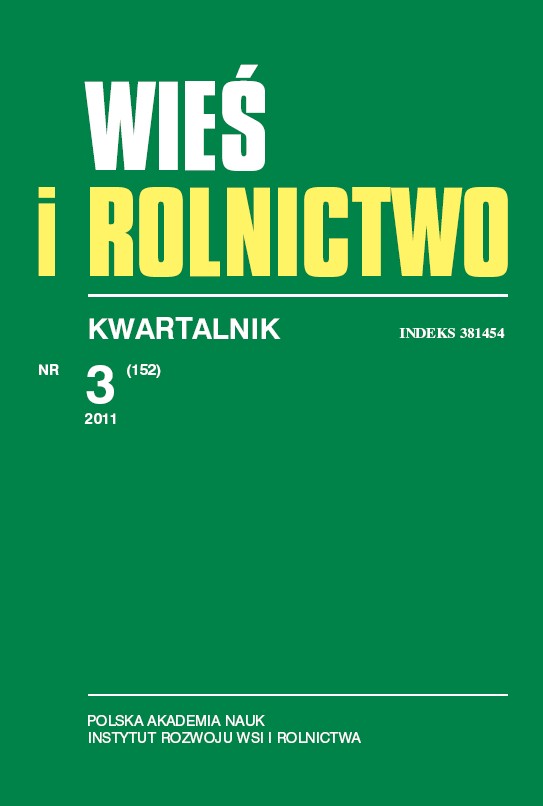The right to property and the right to hunting versus the responsibility for hunting damages
DOI:
https://doi.org/10.53098/wir.2011.3.152/10Keywords:
property rights, right to hunting, hunting damage, responsibility for hunting damages, hunting settlementAbstract
Many controversies have surfaced recently in connection with the legal basis of the model and functioning of hunting in Poland. In accordance with the currently binding legal solutions in this respect the right to hunting is not directly linked to the ownership of land and wild animals constitute a national good whose legal owner is the State Treasury. Such definition of the ownership of wild animals represents a specific way of emphasizing their significance as a supreme value within the natural environment system, as well as their importance for the shaping and protection of the natural environment. To optimize hunting management as an aspect of environmental protection, it is being carried out within selected administrative areas, called hunting inspectorates, which are leased to hunting circles or managed by appropriate institutions. At the same time, issues associated with legal responsibility for damage done by game to cultivated fields arouses serious controversies. This responsibility is transferred to leaseholders or supervisors of hunting inspectorates, who cover the arising obligations from their own resources, including funds obtained from the sale of the wild animals' carcasses which, by law, constitute their property. Such form of legal solutions determines the striving for optimization of hunting management and, simultaneously, limits the responsibility of the legal owner of game for damage done by it.References
Budny M., Kamieniarz R., Kolanoś B., Mąka H., Panek M., 2010: Sytuacja zwierząt łownych w Polsce w latach 2008–2009. „Biuletyn Stacji Badawczej w Czempiniu” 6: 23–25.
Flis M., 2008: Procedura szacowania szkód wyrządzonych przez zwierzęta w uprawach rolniczych. „Biuletyn Instytutu Hodowli i Aklimatyzacji Roślin” 248: 117–123. DOI: https://doi.org/10.37317/biul-2008-0063
Flis M., 2009a: Szkody w uprawach rolniczych w świetle szkodliwego oddziaływania rolnictwa na ekosystemy. Biotop. Zagrożenia biotopów leśnych. Uniwersytet Opolski, Opole.
Flis M., 2009b: Wielkość szkód wyrządzanych przez dziki w uprawach rolniczych w obwodzie łowieckim polnym w latach 1999–2000 i 2008–2009. „Biuletyn Instytutu Hodowli i Aklimatyzacji Roślin” 254: 179–187. DOI: https://doi.org/10.37317/biul-2009-0016
Flis M., 2010a: Zmienność wielkości szkód wyrządzanych przez dziki w zróżnicowanych strukturach agrocenoz. „Biuletyn Instytutu Hodowli i Aklimatyzacji Roślin” 256: 193–204. DOI: https://doi.org/10.37317/biul-2010-0042
Flis M., 2010b: Szkody łowieckie w świetle uwarunkowań ekonomicznych i prawnych. „Wieś i Rolnictwo” 4 (149): 95–103. DOI: https://doi.org/10.53098/wir.2010.4.149/06
Flis M., 2011: Gospodarowanie populacją dzika w świetle uwarunkowań wyrządzanych szkód w ujęciu ekonomicznym i społecznym. „Annals of Warsaw University of Life Sciences – SGGW, Land Reclamation” (w druku).
Ignatowicz J., 1995: Prawo rzeczowe. Wydawnictwo Prawnicze PWN, Warszawa.
Radecki W., 2010: Prawo łowieckie. Komentarz. Wydawnictwo Difin, Warszawa.
Rozporządzenie Ministra Środowiska z dnia 8 marca 2010 roku w sprawie sposobu postępowania przy szacowaniu szkód oraz wypłat odszkodowań za szkody w uprawach i płodach rolnych. Dz.U. z 2010 r. nr 45, poz. 272.
Ustawa z dnia 23 kwietnia 1964 roku – Kodeks cywilny. Dz.U. z 2007 r. nr 82, poz. 557.
Ustawa z dnia 13 października 1995 roku – Prawo łowieckie. Dz.U. z 2009 r. nr 1223, poz. 1777.
Downloads
Article file downloads
Pages
How to Cite
Issue
Section
License
Copyright (c) 2011 Wieś i Rolnictwo

This work is licensed under a Creative Commons Attribution 4.0 International License.










